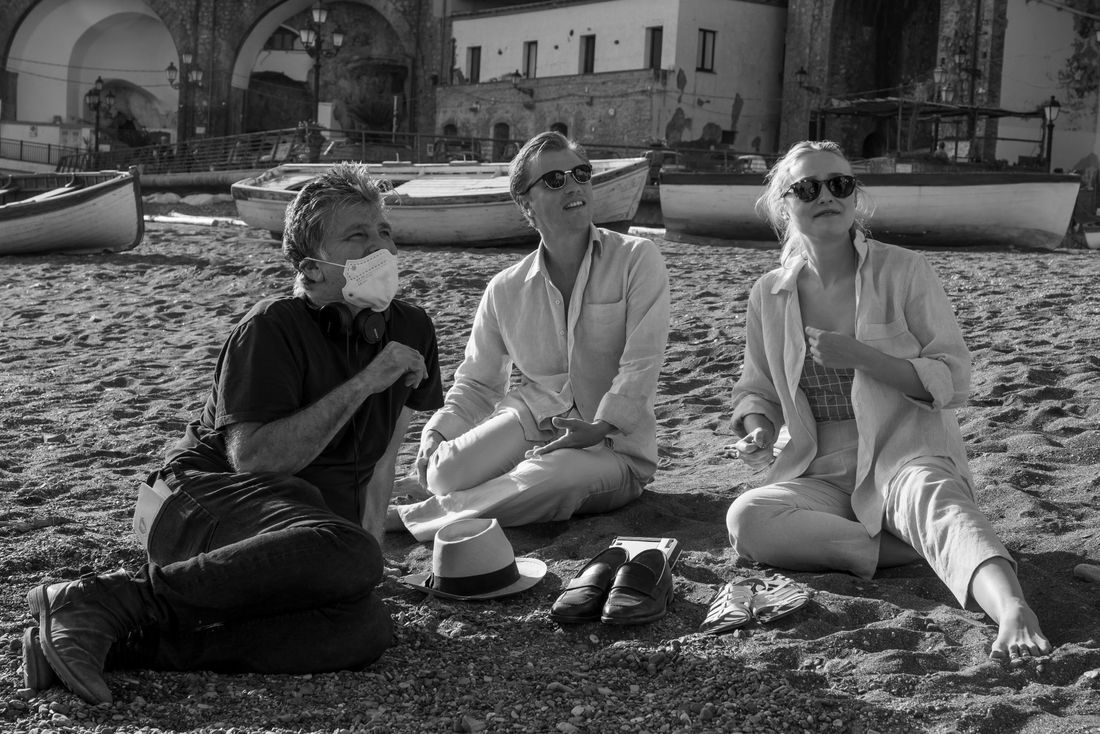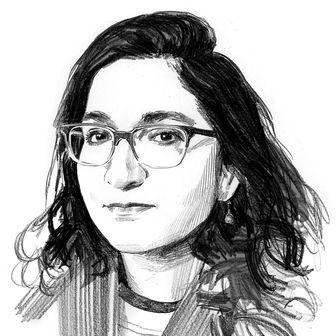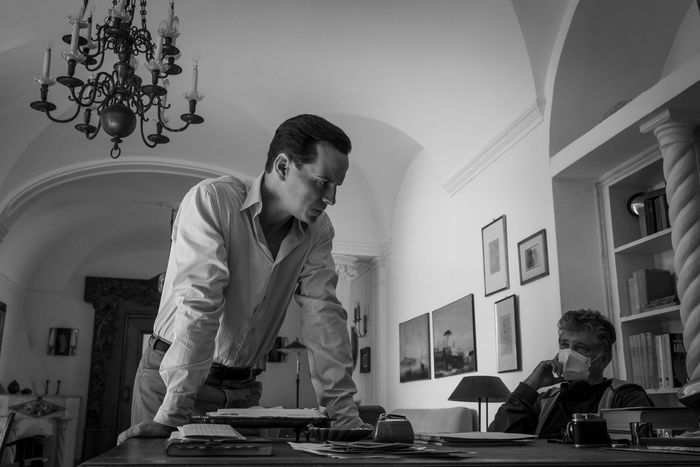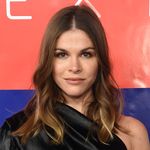
When Steven Zaillian sat down to write his version of The Talented Mr. Ripley for Netflix, he produced what he describes as “a 500-page movie script.” Zaillian isn’t shy about writing scripts with a certain level of detail — clearly laying out character motivations and reactions, both physical and emotional. It’s a deep-dive approach that is part of what makes Ripley such an immersive watch. Long stretches of episodes are devoted to how exactly scammer Tom Ripley (Andrew Scott) wipes up a pool of blood, or how he negotiates a boat-sale scheme with an Italian counterpart, or how he alters his appearance to trick a detective into believing he’s a different person. The series’ moral ambiguity flourishes thanks to all that methodology, which is exactly the kind of thing Zaillian excels at writing (see the chess gameplay of his directorial debut, Searching for Bobby Fischer; the statistics-reliant maneuvering in Moneyball; or the calculated bribery in Schindler’s List).
If Zaillian hadn’t had the ability to make Ripley this long and sprawling, he wouldn’t have done it. “I felt that I could do things with the book that a movie can’t in two hours,” says Zaillian, whose 2016 TV debut, the HBO miniseries The Night Of, won five Emmys out of 13 nominations. The eight-episode Ripley — originally ordered by Showtime before ending up on Netflix — rejects the sunny luxury of previous depictions of the Italian coast (as seen in 1960’s Purple Noon and 1999’s The Talented Mr. Ripley). Its black-and-white cinematography is bold, angular, and unsettling (thanks to cinematographer Robert Elswit, who previously worked with Zaillian on The Night Of, alongside other returning collaborators like composer Jeff Russo and casting director Avy Kaufman), which ends up serving Scott’s version of the sinister orphan well. Unlike the rakish suave of Alain Delon or the corn-fed sincerity of Matt Damon, Scott’s Tom is more mean, even dispassionately alien, in how he disposes of Dickie and Freddie. In the series’ stark color scheme, the bloody damage Scott inflicts on these men and the lonely locations in which he abandons their bodies make both Ripley the character and this portrait of his ascension feel like Patricia Highsmith’s text filtered through a German Expressionist fever dream.
Much of Ripley’s distinctness comes from its mimicry of Zaillian’s own life (aside from the serial-killer thing). His transfixed reaction the first time he saw a piece of Caravaggio-style artwork became Tom’s, too. Kenneth Lonergan, a longtime friend of Zaillian’s, pops up in an unannounced role as Dickie’s self-made father, Herbert Greenleaf. Shadows and darkness are more intriguing to Zaillian than sunny beach weather, which rarely shows up in Ripley, though it defines the look of previous adaptations. But maybe only a director who would confess to hating blue skies is capable of appropriately forefronting the murk of Tom Ripley.
Ripley is shot in black-and-white. You’ve said you consider the book the “novelistic version of film noir.” Did classifying the story in that genre lead you to the color palette?
That’s part of it. The other part is because the story itself is a rather dark and sinister story. It’s not impossible, but it’s difficult, to shoot Italy in color without having it look like a postcard. We shot in the winter; the whole story takes place in the winter. I didn’t want blue skies; I wanted cloudy skies, rain and rain-glistening streets. I had that look in mind from the beginning.
There’s a moment when Marge is writing Dickie a letter and says the tomato plant he gave her is thriving, and the series cuts to a shot of the plant completely dead. I laughed. It’s Tom Ripley by way of The Cabinet of Dr. Caligari. There is something so unsettling about seeing Italy this way.
Cinematographer Robert Elswit tells this story that I forgot, which is — Robert knows how much I hate clear blue skies. But when we were shooting the scene on the beach when Tom meets Dickie and Marge, there was nothing we could do about it. It was sunny. I wanted to put the camera way up high and get a shot of them lying on this beach. As I was doing that and had Tom walk by, his shadow fell across them. And Robert said, “Well, that never would have happened with an overcast sky. There are some good things about a clear, sunny day.”
Were there any approaches you and Robert used to amp up the visual contrast of the show?
There was a standing rule that whenever we were shooting outdoors, we had the ability to wet down the streets, whether it was daytime or nighttime, because it instantly brings those film-noir images to mind. And because it’s beautiful; it’s a little better than a dry street.
I’m curious about the Caravaggio of it all, and how the Italian painter and his work entered into the adaptation.
The first time I went to Italy, I went to a small museum in Perugia, and I was looking at this painting that had drawn my attention. It didn’t look like any other painting in the place. There was no one in the room except a museum guard and me. After watching me stand longer before this painting than any others in the room, the guard came up behind me and said exactly what the priest says in the show — “La luce, sempre la luce”; “The light, always the light.” He was talking about the chiaroscuro of the painting. It was not a Caravaggio, but a painting by a peer or next-generation artist influenced by him — a Caravaggisti. So I started seeking out all the Caravaggios in Italy when I was there. When I was writing the script, I put that in, and it developed from there. It became a sort of motif. I felt that Tom was somebody who could appreciate art and would do something like that.
And at a certain point, I said, “Well, let’s show Caravaggio himself.” He murdered someone 350 years ago. You may think you’ve made a mistake when it says, “Roma, 1606,” but I thought people would keep up with it. We went to the paintings in the cities we were shooting in. In Naples, we went to Misericordia Church, which is where Seven Mercies is. In Rome, there’s a triptych of three paintings in San Luigi dei Francesi, which I’ve seen before. In terms of the ones that he would look at in books, those were the ones that he hadn’t seen in person that I thought he should see — some of the ones that I liked.
We start the series with Tom dragging Freddie’s body down the stairs and then we go into the details of his life in New York. Was establishing Tom as a killer always your beginning?
It wasn’t. In the scripts, it starts in New York City. During the editing, I had the idea to start there as a little prologue. That’s one of the things that happens when you have the time in post to think about things, rethink things. We had almost two years in post.
Something I like about that beginning is we see the cat Lucio for the first time. I remember thinking, This cat knows what’s going on.
The only witnesses to Tom are animals and portraits and things that can’t testify. A goat sees something. And the cat. The cat sees everything.
The Tom and Freddie dynamic feels shaped by a shared loathing that’s potentially mixed up in their sexualities. Freddie is played by Eliot Sumner, who is nonbinary but male-presenting and implied to be gay in the series. I’m curious about the intention behind Eliot’s casting, and if there was a layer to the performance that you wanted to reflect our questions about Tom’s sexuality.
Not really. Eliot was cast from an audition tape, one of 200 actors who came in for that part. Most of them played the part as a kind of version from the book, although some of them were playing it almost like a copy of Philip Seymour Hoffman. And Eliot did something completely different, which was sophisticated, quiet, British. And I thought, This is it. Why can’t this character be the most sophisticated person in the story? Which I feel Freddie is, and that makes him a bigger challenge and a bigger threat to Tom, if he’s not just some sort of loud, obnoxious American character.
The moment with the Ferragamo loafers, when Freddie realized Tom was wearing Dickie’s shoes, really threw me. As you said, this version of Freddie is quiet, but he’s taking inventory of everything.
Eliot said that and did it exactly that way in the audition — without looking, is what I mean. And I thought, That is so smart, to take in the shoes before. I won’t bother showing Freddie taking in or seeing the shoes, but he does. It was a joke on the set when I’d say, “Let’s get another shot of Freddie’s shoes. Let’s get another shot of Tom putting on his Ferragamos.” It’s the thing that starts the whole sequence between these two, is this lying. So there’s a lot of shots of the shoes.
This series has such a collection of wealth signifiers: the loafers, the Brooks Brothers robe, the gold cigarette case, the fridge, the Picasso. Were they scripted to that level of detail?
They were scripted — the pen, the Hermes Baby typewriter. The Picasso was chosen while we were filming, and we had to get it painted and the rights to use it from the estate. For me, these items are important, and they’re not important because they signify wealth to Tom. I don’t think Tom looks at them that way. I think the people that own them look at them that way, like a status symbol. But Tom just appreciates them for the beauty in them. He’s attracted to them because he likes to look at them — even the ashtray. He just likes to have nice things around him, beautiful things.
Andrew said that the series has a “very light message” that “everybody is deserving of beauty and arts in the world. It’s not for a certain section of the community. It’s not just for the rich … We have to understand that it’s about class and money and morality and fairness.” I’m curious if you agree with that — if you were aiming for someone to walk away from the series with, if not exactly an eat-the-rich ideology, more of a spread-the-wealth ideology. Did you create the series with a political angle as an intention?
I wasn’t really thinking about that. I did think that Tom appreciates these things in a way that the rich don’t. The rich feel entitled to them, and they don’t see the inherent beauty in them. And he comes from a place where he does.
I want to ask you about Dickie and Marge, who were more homophobic than I expected. Can you talk a bit about that characterization of them?
I never really thought of them as homophobic. For Dickie to say, “Marge thinks you’re queer,” I don’t think that’s homophobic. I think that’s just what she thinks. At one point she says, “I don’t know what to think of Tom’s sexuality. I don’t think he’s normal enough to have any sort of sex life,” so she doesn’t know what’s going on in that regard. I think Tom has never really loved anybody other than himself. But the closest he comes is Dickie — maybe he likes him, he might even love him. And I think Dickie finds something attractive about Tom as well.
Andrew has said he doesn’t see Tom as a villain. You’ve said that you don’t think about generating sympathy or empathy when you’re writing characters. But I thought the series was very pointed about keeping us in Tom’s perspective when he does things I perceived as humorously mean, like when Marge is getting back on the train and Tom very energetically says “bye” to her and then throws her scarf away. How much of that dark comedy was intentional?
It’s all intentional, yes. I love the relationship between Tom and Marge. At one point I said to myself, I think they would actually be very good friends if they didn’t happen to be in love with the same person, because they’re very much alike. You see this relationship changing when Marge starts to see the advantage of Dickie being missing and her starting to get some attention for that. Tom doesn’t really appreciate it. The scenes with them in Venice together I just love.
I liked how much friction there is in their arguments. It felt like watching a duel, each of them trying to get the last word.
And it’s the thing that nobody else seems to notice with them. If there’s a scene between the three of them — Dickie, Tom, and Marge — you’ll notice Dickie’s always looking down or looking off when those looks happen between them.
Dickie’s death is a huge moment. It seems spontaneous, but it’s such an involved scene — Tom attacks Dickie and collects items from his body, then ends up in the water himself when he tries to dump Dickie’s body, and then weights the boat and sinks it. What went into that?
That particular sequence probably took a week to shoot. Did we talk about it? We didn’t really talk a lot about anything. If a question would come up, I’d try to answer it, but I felt like the actors knew who they were. The scripts I write aren’t shy about mentioning what a character is thinking or feeling. I don’t write camera angles, but I do write that. In that particular case, Andrew had an awful lot to do. That was just a matter of committing it to memory and then doing it, and making it feel as if he’s figuring it out as he goes along, which was very important to me both in the sequence with Dickie and then later with Freddie — to show that he is not a professional killer. He’s actually no better at it than we would be. How do I get this guy out of a boat? becomes a huge problem. We shot that in a tank. How do I get this guy downstairs? becomes a really elaborate problem. Those two long sequences were in the script — they were quite long in the script.
For the most part, the series does not use handheld. But there is a moment when Tom is dragging Freddie’s body out of the apartment that we see one handheld shot, right?
It’s sort of one setup. I did shoot it non-handheld, as wide, as well. I like setting the frame and having the action take place in the frame. But when Joshua Raymond Lee, who is one of the editors, used it, I said, “Oh, I don’t think I want to use it. It would be the only handheld shot in the whole series.” And he said, “Well, maybe that’s a good reason. I think it looks really good here.”
I liked it because it helped make that moment feel unplanned, like another instance of Tom trying to figure this all out. Beyond the camerawork, was there a specific scene or moment where Andrew surprised you with a contribution to this version of Tom? I’m thinking of his “I like girls” line, which Andrew delivers very flatly.
Everything in that scene is for that line. And when there is a line like that, where it is the whole point of the scene, I’ll keep doing it until I hear it. He had a lot of patience with me in that regard. And when I heard it, I said, “Okay, good, we’re done with this scene.”
I mean, everything surprised me. I was constantly surprised daily by the choices he would make. He’s also really good at the process of things. If he has to forge something, he’s going to forge it. If he’s going to have to write a letter, he’s going to write it. If he has to climb from the water into a boat, which is extremely hard — it seems like it’s easy; it’s not — he’s going to do it, and I’m going to keep filming it.
There are scenes in the series where we are supposed to doubt Tom’s sanity a little bit. I’m thinking about the Italian language tapes, where the dialogue he’s learning feels very particular to him: “How much money do you need?” Or when he sees Dickie’s ghost. Or when he imagines Bokeem Woodbine’s detective listing all of his crimes. What should we take away from those scenes?
It’s more about a glimpse into his mind. But not to say, “Oh, he’s crazy.” There were actually more of them in the scripts. But the ones we do see include when he’s writing a letter to his aunt Dottie. He imagines her at the dentist. He imagines the people he doesn’t like being in some uncomfortable situation.
And it was important to me that what he imagines is something that he’s actually seen. If he’s going to imagine a banker in a bank, it’s a bank that he’s been to; if he’s going to imagine a private detective accusing him of something, he imagines him in what he imagines a private-detective office should look like, which is something straight out of a movie that he’s seen. The locations of these — I don’t know if I would call them a fantasy — imaginings of people talking to him are intentional.
In the last episode of the season, we’re introduced to John Malkovich’s character, Reeves, who sees Tom for what he is, and Tom sees him for what he is. They describe themselves as “art dealers,” and Reeves is the closest thing Tom has to an ally. Did you write the role for Malkovich, who played Tom Ripley in 2002’s Ripley’s Game?
He doesn’t appear in the first book; he’s introduced in the second book, Ripley Under Ground. More than anything else, I thought it would be fun to see him in this one, and figured out a way he could actually serve some sort of plot function. It was as simple as writing to John and telling him, “It might be fun to do this, and I hope that if there ever is another one, if we do any more of these books, that you’d want to do that too.” And he said, “Yeah!”
Was Kenneth Lonergan cast as Herbert Greenleaf in a similar way? You and him working together again was a mini Gangs of New York reunion that I was very excited about.
Kenneth, I’ve known him for a number of years, and I’ve always liked his performances in his own movies. What I didn’t want was what I would call your standard blue-blood aristocratic rich guy. I wanted somebody who felt more like a working man who made his money. That would be more meaningful in terms of the story. It was just, “Hey Ken, maybe you want to do this.”
At the end of the season, after Tom has convinced everyone that Dickie died by suicide and he’s reading the letter he forged that he’s passing off as Dickie’s last words, Herbert looks so guilty when he hears who he thinks was Dickie describing his own paintings as “worthless.” But they are pretty terrible. How did they come into being?
We had an Italian artist in the art department, Valentina Troccoli. She did all the Dickie paintings. She also did the Caravaggios; there’s a scene where we’re in his atelier and we see a couple of his paintings in the process of being painted. She also did the Picasso. She’s really something. For the Dickie paintings, production designer David Gropman and I initially had this idea that we would put up easels and everyone in the art department would try to paint badly, and that it might be better if it wasn’t a professional artist trying to paint badly, but somebody who just painted badly. It turned out that the professional won the contest. She was able to do it in a way that didn’t look ridiculous but at the same time was not good.
Was there anything from the Ripley books that you wanted to adapt in this series but that you didn’t get to?
No. But if somebody wants to do it again, there’s no shortage of material. She wrote five books about Tom Ripley, so there’s a lot there. My favorite of those books is called Ripley’s Game. I just love that story.






